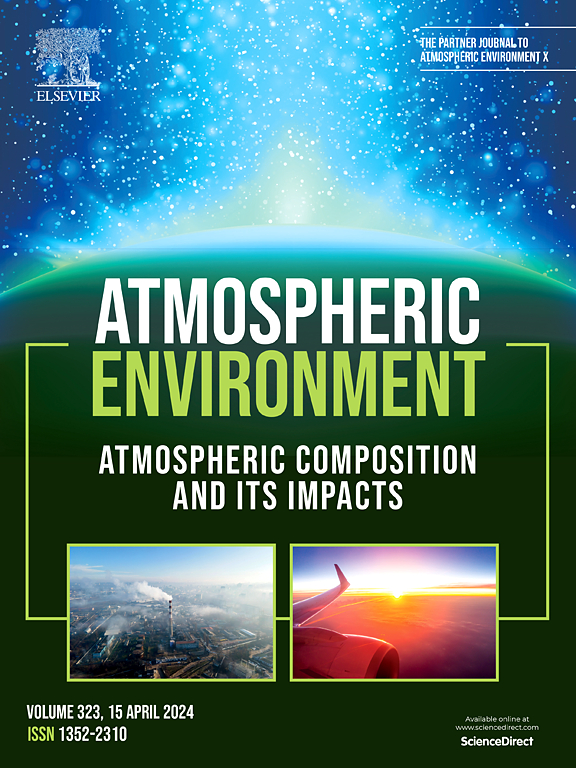区域温度和湿度对日死亡率与细颗粒物和臭氧短期共暴露关系的修正作用
IF 3.7
2区 环境科学与生态学
Q2 ENVIRONMENTAL SCIENCES
引用次数: 0
摘要
以往评估PM2.5和O3对死亡率协同影响的研究表明,结果存在区域差异。基于中国130个县的时间序列研究旨在探讨区域温度和湿度的变化对这种协同效应的影响。采用协同效应指数和按共暴露水平分层的分析来表征PM2.5和O3对死亡率的协同影响。通过分层分析评价了温度和相对湿度的调节效果。在计算PM2.5和O3致死人数时,考虑和不考虑两者的协同作用,以及区域温度和相对湿度的影响。PM2.5和O3浓度每升高10 μ g/m3,高浓度O3(2%)和PM2.5(1.10%)下的心肺死亡率增幅显著高于低浓度O3(0.53%)和PM2.5(0.86%)下的心肺死亡率增幅。在低温地区心血管死亡率和低湿度地区呼吸系统死亡率的协同效应更为明显。忽略PM2.5和O3的协同影响可能导致对可归因死亡人数的估计不准确,不准确的程度受温度和相对湿度的影响。我们的研究强调了在评估PM2.5和O3的协同影响时考虑气象因素对提高疾病负担估算的准确性和为空气污染控制政策提供信息的重要性。本文章由计算机程序翻译,如有差异,请以英文原文为准。

Modification effects of regional temperature and humidity on the relationship between daily mortality and short-term coexposure to fine particulate matter and ozone
Previous studies assessing the synergistic impact of PM2.5 and O3 on mortality have demonstrated regional heterogeneity in results. A time series study based on 130 Chinese counties aimed to investigate the modification of regional temperature and humidity on this synergy effect. Synergy indices and analyses stratified by coexposure level were applied to characterize the synergistic impacts of PM2.5 and O3 on mortality. Modification effects of temperature and relative humidity were evaluated by stratified analyses. Deaths attributable to PM2.5 and O3 were calculated both with and without considering their synergy, as well as the influences of regional temperature and relative humidity. The increases in cardiorespiratory mortality every 10 g/m3 rise in PM2.5 and O3 are significantly greater under high O3 (2 %) and PM2.5 (1.10 %) levels than under low O3 (0.53 %) and PM2.5 (0.86 %) levels. The synergistic effects were more pronounced in low-temperature areas for cardiovascular mortality and in low-humidity areas for respiratory mortality. Ignoring the synergistic impact of PM2.5 and O3 may lead to inaccurate estimates of attributable deaths, with the extent of inaccuracy influenced by temperature and relative humidity. Our study underscores the importance of considering meteorological factors when assessing the synergistic impact of PM2.5 and O3 to improve the accuracy of disease burden estimates and inform air pollution control policies.
求助全文
通过发布文献求助,成功后即可免费获取论文全文。
去求助
来源期刊

Atmospheric Environment
环境科学-环境科学
CiteScore
9.40
自引率
8.00%
发文量
458
审稿时长
53 days
期刊介绍:
Atmospheric Environment has an open access mirror journal Atmospheric Environment: X, sharing the same aims and scope, editorial team, submission system and rigorous peer review.
Atmospheric Environment is the international journal for scientists in different disciplines related to atmospheric composition and its impacts. The journal publishes scientific articles with atmospheric relevance of emissions and depositions of gaseous and particulate compounds, chemical processes and physical effects in the atmosphere, as well as impacts of the changing atmospheric composition on human health, air quality, climate change, and ecosystems.
 求助内容:
求助内容: 应助结果提醒方式:
应助结果提醒方式:


